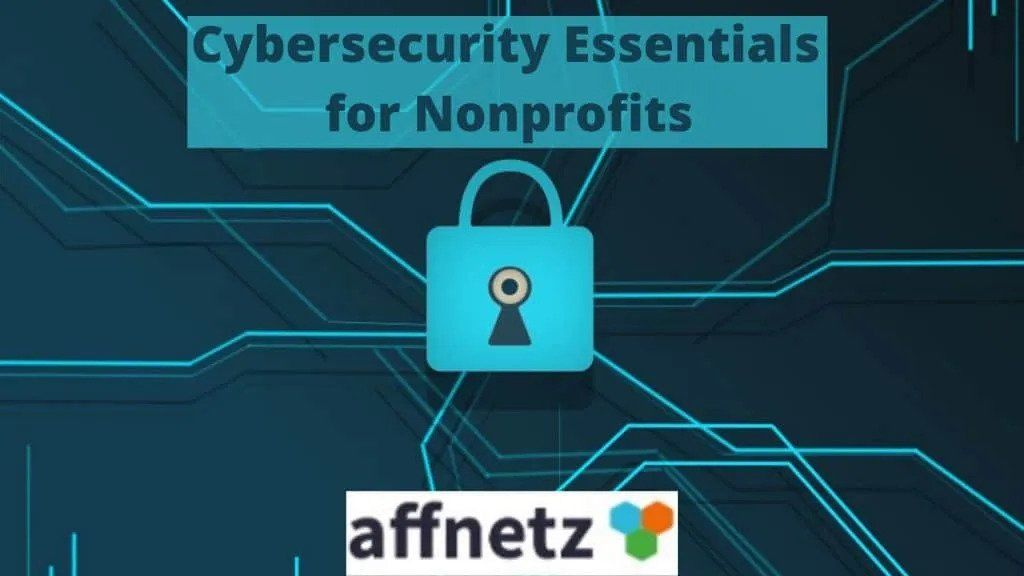
Peer-To-Peer Fundraising Platforms & Best Practices
Peer-To-Peer Fundraising Platforms & Best Practices / By Bala Guntipalli
Indroduction:
Peer-to-peer fundraising platforms have revolutionized the way nonprofits engage with their supporters, harnessing the power of social networks to amplify their fundraising efforts.
With the rise of digital platforms and social media, peer-to-peer fundraising has become increasingly popular, offering organizations a dynamic and effective way to raise funds and expand their reach.
What is Peer-to-Peer Fundraising?
Peer-to-peer fundraising, often abbreviated as P2P fundraising, is a strategy where individuals raise funds on behalf of a nonprofit organization by reaching out to their personal networks of friends, family, and colleagues.
It empowers supporters to become active participants in the fundraising process, turning them into advocates for the cause they believe in. Whether it’s running a marathon, organizing a bake sale, or hosting a virtual event, peer-to-peer fundraising allows supporters to leverage their personal connections to drive donations and support for a nonprofit’s mission.
While organizations operating in close-knit communities can achieve results by physical presence, such as hailing neighbors in front of the grocery store or setting up booths at the local farmers market, the use of fundraising apps has dramatically improved the effectiveness of volunteer time and donor participation.
This article delves into strategies that leverage such technologies. Let’s dig in.
Enhancing Effectiveness with Peer-to-Peer Fundraising Platforms:
Peer-to-peer fundraising platforms for nonprofits are online and/or mobile apps that play a key role in the success of nonprofit campaigns. They offer a wide variety of tools and functionalities designed to streamline the fundraising process and maximize engagement and are often designed for very specific styles of donor engagement.
As the technology backbone of most peer-to-peer fundraising initiatives, these platforms provide the infrastructure needed to orchestrate dynamic and impactful campaigns. There are some essential features that nonprofits should look for as they consider adopting peer-to-peer fundraising platforms to achieve their own fundraising goals:
1. Personalized Fundraising Pages
At the heart of peer-to-peer fundraising platforms are personalized fundraising pages. These pages serve as the digital hub for each individual participant in the campaign, allowing them to share their stories, set fundraising goals, and showcase their progress.
Look for robust customization options that enable individuals to tailor their pages to reflect their unique personalities and connection to the cause.
2. Seamless Social Integration
Social media plays a crucial role in enabling individual participants to drive engagement and expand reach into their personal networks. The best peer-to-peer fundraising platforms for nonprofits seamlessly integrate with popular social media networks like facebook, X, and Instagram.
This greatly simplifies how participants can amplify their message and solicit donations from a wider audience.
With just a few clicks, supporters can share their fundraising pages across multiple platforms, harnessing the power of social networks to drive donations to their causes, and raising awareness of their campaigns.
3. Secure Donation Processing
Trust and security are paramount in online fundraising. Leading peer-to-peer fundraising platforms prioritize secure donation processing, leveraging robust encryption and payment gateways to safeguard donor information and provide traceability for all transactions.
Seamless integration with payment processors ensures that donations are processed quickly and efficiently, providing peace of mind to both donors and nonprofits.
4. Real-Time Reporting and Analytics
Data-driven insights are essential for optimizing performance and making informed decisions during the campaigns. The best peer-to-peer fundraising platforms offer real-time reporting and analytics dashboards, allowing nonprofits to track key metrics, monitor progress, and identify areas for improvement.
From tracking fundraising goals during the campaigns to analyzing donor demographics after-the-fact, these tools provide invaluable insights that drive strategic decision-making.
5. Engagement Tools
Engaging campaign participants throughout their fundraising journey and delighting donors with updated information about the cause are crucial for maintaining momentum and fostering a sense of community. Peer-to-peer fundraising platforms come equipped with a variety of engagement tools, including:
- Automated email campaigns
- Social media toolkits
- Virtual event management features.
These tools enable nonprofits to communicate effectively with both participants and donors, provide them with resources and support, and cultivate a vibrant fundraising ecosystem.
6. Support and Training
Navigating the complexities of peer-to-peer fundraising can be overwhelming, particularly for newcomers to the world of fundraising. Without clear guidance and support, participants, especially those new to the process, can easily become disengaged and lose momentum.
For instance, imagine a scenario where a first-time fundraiser sets up their campaign on a platform lacking intuitive navigation or comprehensive onboarding resources. Frustrated by the lack of guidance, they may struggle to effectively communicate their message or reach their fundraising goals, ultimately leading to disappointment and disinterest.
In contrast, the best peer-to-peer fundraising platforms prioritize user experience and provide extensive support mechanisms to empower participants.
By offering step-by-step tutorials, interactive webinars, and responsive customer support, these platforms ensure that fundraisers feel supported and equipped to navigate the fundraising journey successfully. This proactive approach not only fosters engagement but also maximizes the potential for fundraising success, ultimately benefiting the nonprofit and its mission.
7. Flexibility and Scalability
Every nonprofit has a unique combination of mission, supporters, volunteers, donors, and common cultural patterns that unify the cause and rally the fundraising efforts. This makes every campaign unique, with its own goals, audience, and challenges.
To meet these diverse needs, peer-to-peer fundraising platforms need to offer the flexibility and scalability to accommodate a wide range of campaign types and sizes. Whether hosting a small grassroots initiative or a large-scale virtual event, each nonprofit relies on its platform of choice to be able to adapt to their changing needs, and scale accordingly.
Peer-To-Peer Fundraising Best Practices:
Enabled by the explosion of apps and platforms in recent years, a new set of best practices for peer-to-peer fundraising have emerged and driven the popularity of this style of sourcing nonprofit revenue. As a result, the 30 largest peer-to-peer (P2P) campaigns in 2018 in the U.S. brought in $1.29B, and involved 6.3 million participants.
To drive better outcomes for this type of campaign, here are seven winning tactics employed by successful P2P fundraisers.
Set specific and detailed goals – All fundraising efforts should have clear goals. To make challenging goals more attainable, great P2P campaigns organize participants into teams, and break down the top-level goals into team-level targets. Examples include:
- Overall number of participants who launch their personalized campaigns
- Number of teams, target team size, and factors that cohere each team
- Fundraising targets for each team, based on their composition and demographics
- Overall number of donors, donor categories, and donation expectations
- Campaign timelines and midpoint targets
Make the process easy for leaders and their teams – To keep the excitement levels high, make sure all processes and the software that supports the participants and donors are seamless and simple, fast and bug-free.
Provide team leaders with platform access dedicated to their roles, and make their administrative tasks just as easy to use as those of participants. Also, provide team leaders with the resources and training to thoroughly support their team members.
Make it mobile – Deploying the campaign content and workflows on mobile platforms is essential. Especially participants and donors must be able to perform their actions quickly and easily, at the moments at which inspiration and motivation spike.
Being able to convert a friend in a few seconds while waiting in line at the coffee shop drives immediacy and excitement for the campaign. This is among the most important of the best practices for peer-to-peer fundraising.
Promote via multiple channels – Every campaign should have a communication plan, and every communication plan should span print, video, website, email and social media. Don’t leave it to the participants to do the promotion – it’s up to the nonprofit to drive awareness of the campaign and the impact the results will have on their mission.
Potential participants and donors will be more motivated to jump on board to experience the success, if they see promotional content from multiple channels in their community and know it is reaching their target donors.
Communicate frequently – Keep participants informed throughout the campaign, including midpoint progress and specific wins, to maintain engagement and motivation. At the end of the campaign, thank all participants and celebrate their efforts toward achieving the goals, especially in terms of impact on the beneficiaries of the nonprofit.
Provide meaningful incentives – Swag and unique promotional items are helpful to build a sense of camaraderie, but lining up organizations ahead of time that provide donation matches are more impactful on revenues.
Look for employer matching programs, or approach popular businesses in the community who would benefit from publically associating themselves with the mission of the nonprofit.
Conduct a rigorous post-campaign analysis – The analysis should include:
- Actual to plan analysis, at team level targets and over midpoints.
- Number of teams, team size targets, and team cohesion.
- Results of midpoint and post-campaign surveys of leaders, participants,and donors for feedback on improvement opportunities
- The performance of processes and software workflows, to fix problems and innovate new ideas while they are fresh.
Peer-to-peer fundraising is an ascendant approach for nonprofits to efficiently raise funds, engage supporters, and advance their mission. By implementing the best practices we describe in this article, and by leveraging innovative technology platforms designed specifically for peer-to-peer fundraising methods, organizations can boost their results and unlock the full potential of their campaigns, and create lasting positive change in their communities.
As the landscape of fundraising continues to evolve, peer-to-peer fundraising will undoubtedly remain a cornerstone strategy for nonprofits looking to make a difference.
Conclusion: Why Affnetz
The Affnetz nonprofit platform includes a rich and flexible peer-to-peer fundraising module designed from the ground up to enable organizations to amplify their fundraising efforts through social networks. The platform implements these and other best practices directly into software, empowering supporters to create personalized fundraising campaigns.
These features facilitate wider reach and engagement, leading to increased donations. Affnetz integrates seamlessly with your existing platforms, so you can add peer-to-peer fundraising to your revenue strategies efficiently and effectively. Contact us to get a live demo or see how it works here.
Disclaimer: The content provided is for informational purposes only and does not constitute a binding recommendation. All trademarks, service marks, and logos appearing in the review are the property of their respective owners. Information may have changed since the publication date, and we encourage readers to verify the current accuracy of any data or claims.
Author
Bala has a wide variety of experience both in business, member-based associations and Nonprofits. With hundreds of successful projects to his credit, Bala’s business background includes positions at IBM Corporation, see more



